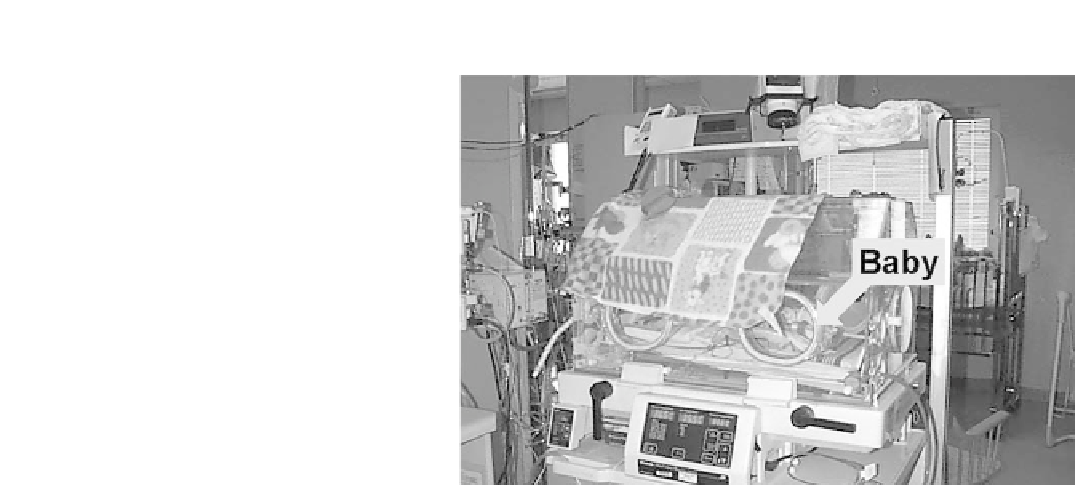Biology Reference
In-Depth Information
FIGURE 6-1.
Equipment monitoring the vital signs of a premature baby. (Photo courtesy of Drs. J. Randall
Moorman and M. Pamela Griffin, University of Virginia.)
Sepsis may predispose newborns to other hazardous medical conditions
that may be more likely fatal for premature infants. For example, the
risk for death or meningitis from sepsis is much higher in infants with
LBW than in full-term neonates. In addition, necrotizing enterocolitis
(NEC), a serious gastrointestinal disease, affects up to 4,000 infants in the
United States yearly, and an estimated 10% to 50% of infants who
develop NEC die (Kellogg et al. [1997]). Infants who develop NEC may
require intubation and increased respiratory support. Survivors are often
left with strictures and short-bowel syndrome. Thus, premature infants
require careful vigilance so that sepsis or SIRS can be detected early and
therefore treated more effectively.
Unfortunately, the early clinical signs of sepsis and NEC in newborns
are neither uniform nor specific, being associated with characteristics of
the causative bacteria and the body's response to the infection.
This makes the early diagnosis of neonatal sepsis extremely difficult
and results in many unnecessary procedures, including blood cultures,
short courses of antibiotics administered to infants without bacterial
infection, and interruptions in neonatal nutrition. Many newborns
undergo diagnostic studies and treatment with antibiotics before the
diagnosis has been confirmed, and this is clinically justified because of
the rapid development of the infection and its potentially lethal
consequences.
Drawing blood and evaluating the culture in a laboratory is the gold
standard for establishing the diagnosis of sepsis caused by systemic
bacterial infection. However, there are also concerns regarding its








